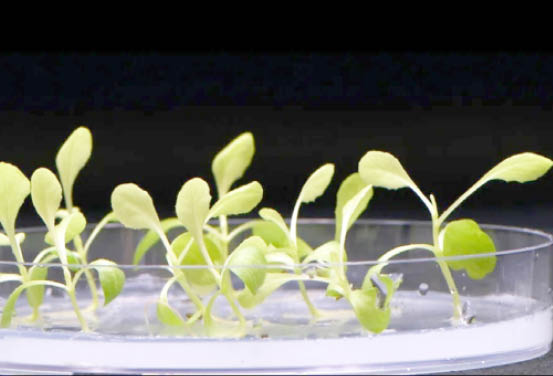Electronic Soil: Enhancers To Crop Growth By 50% – Scientists
A groundbreaking development in agricultural technology has emerged from the laboratories of Linkoping University in Sweden. Scientists have unveiled an electrically conductive “soil” engineered to foster exceptional growth in crops, particularly barley seedlings, marking a potential 50 per cent surge in growth within a mere 15-day period.
This innovative soilless cultivation method, termed hydroponics, harnesses a sophisticated root system activated through a novel cultivation substrate. Eleni Stavrinidou, an esteemed associate professor at Linkoping University, underscores the critical importance of this advancement amidst mounting global challenges. “The world population is burgeoning, and climate change looms large. It’s evident that existing agricultural methods alone can not sustain our planet’s food needs,” stated Stavrinidou.
With hydroponics, the prospect of cultivating food in urban landscapes under meticulously controlled conditions becomes a tangible reality, asserts Stavrinidou. The team’s brainchild, an electrically conductive cultivation substrate christened eSoil, is tailored explicitly for hydroponic cultivation.
Published in the esteemed journal Proceedings of the National Academy of Sciences, their groundbreaking research highlights the remarkable acceleration in barley seedling growth by up to 50 per cent within a fortnight when their roots were electrically stimulated.
In hydroponic cultivation, plants thrive sans soil, reliant solely on water, nutrients, and a supportive substrate for root attachment. This enclosed system facilitates water recycling, ensuring precise nutrient delivery to each seedling. Consequently, minimal water usage and optimal nutrient retention distinguish hydroponics from conventional methods.
Moreover, the vertical cultivation potential of hydroponics, using towering structures, maximises space efficiency. While crops like lettuce, herbs, and select vegetables are already successfully cultivated using this method, grains have typically not been part of hydroponic agriculture, except for fodder purposes.
However, the recent breakthrough study challenges this norm, showcasing the viability of cultivating barley seedlings hydroponically with significantly improved growth rates attributed to electrical stimulation.
Stavrinidou explains, “This approach accelerates seedling growth while conserving resources. Yet, the precise biological mechanisms involved remain elusive. What we do know is that seedlings process nitrogen more efficiently under electrical stimulation, although the exact impact remains unclear.”
Traditionally, mineral wool serves as the cultivation substrate in hydroponics. However, this non-biodegradable material entails an energy-intensive production process, prompting researchers to seek sustainable alternatives.
eSoil
A pioneering electronic cultivation substrate fashioned from cellulose, the most abundant biopolymer, combined with a conductive polymer known as PEDOT. While the blend isn’t novel per se, its unprecedented application in plant cultivation and the creation of a plant interface mark a groundbreaking stride.
Diverging from prior research that employed high voltage for root stimulation, the Linkoping researchers’ “soil” boasts significantly lower energy consumption and eliminates high voltage hazards.
Stavrinidou envisages a horizon teeming with fresh research avenues to further enhance hydroponic cultivation. “While we can not claim that hydroponics will single-handedly resolve global food security challenges, it undeniably offers immense potential, especially in regions with limited arable land and harsh environmental conditions,” she concludes optimistically.
Dailytrust/Shakirat Sadiq


Comments are closed.